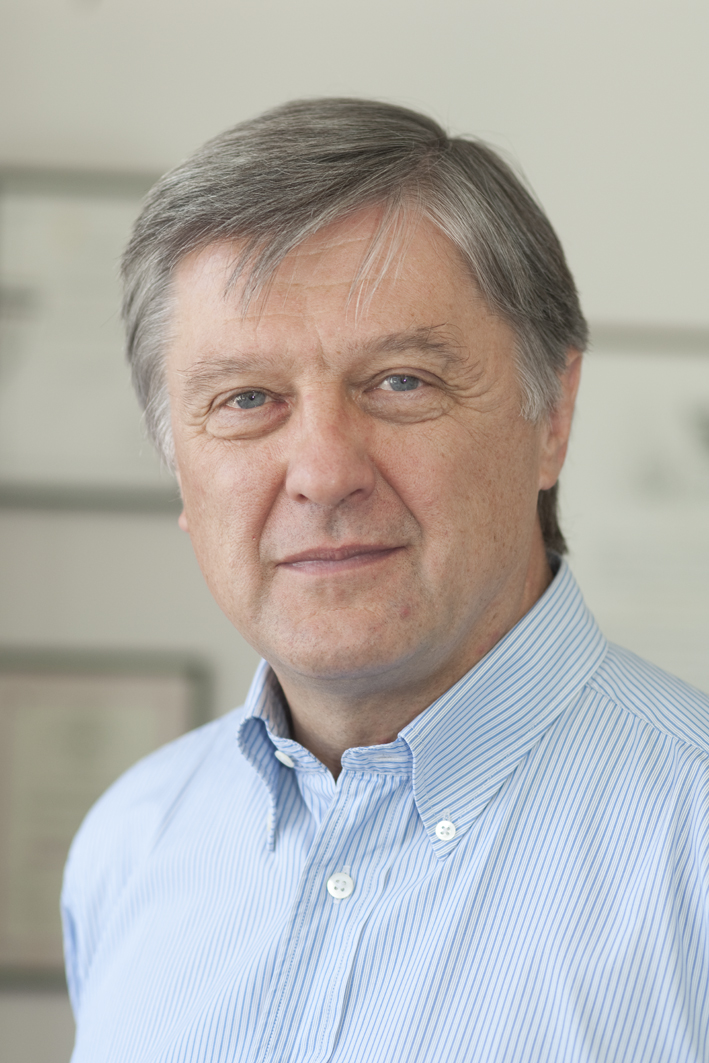|
|
Biography |
|
|
 Richard Frackowiak is Professor and head of the Department of Clinical Neurosciences at the Université de Lausanne (UNIL) and its Centre Hospitalier Universitaire Vaudois (CHUV). He is a co-director of the proposed EU Human Brain Project.
Formerly Foundation Professor of Cognitive Neurology at University College London (UCL), Director of the Department of Cognitive Studies (DEC) at the Ecole Normale Supérieure in Paris, Wellcome Trust Principal Clinical Research Fellow and Vice-Provost of UCL and Dean-Director of its Institute of Neurology. He founded the Wellcome Department of Imaging Neuroscience in 1994.
Frackowiak has an MA and MD from Cambridge (Peterhouse), a DSc from London University, an honorary medical doctorate from Liege University and an honorary professorship from UCL. A Fellow of the Academies of Medical Sciences of the UK, France and Belgium, he is a member of the Academia Europaea and a foreign associate of the Institute of Medicine of the American Academies. He has served as president of the British Neuroscience Association and the European Brain and Behaviour Society.
He is scientific advisor to the Director-General of INSERM. He has held prestigious visiting professorships, a chaire d’excellence from the Agence Nationale de Recherche, editorships and international society roles worldwide. He has always shown a commitment to Europe and had many advisory positions in the context of FP5 through to the present, including chairmanship of the European Research Council (ERC) starting grants committee in Life Sciences.
His interest is in human brain structure and function relationships in health and disease. He has recently moved to a more translational strategy in research by using novel image classification techniques. His scientific output is highly cited with an h-index of 142. He has won the Ipsen, Wilhelm Feldberg and Klaus Joachim Zulch prizes.
Richard Frackowiak is Professor and head of the Department of Clinical Neurosciences at the Université de Lausanne (UNIL) and its Centre Hospitalier Universitaire Vaudois (CHUV). He is a co-director of the proposed EU Human Brain Project.
Formerly Foundation Professor of Cognitive Neurology at University College London (UCL), Director of the Department of Cognitive Studies (DEC) at the Ecole Normale Supérieure in Paris, Wellcome Trust Principal Clinical Research Fellow and Vice-Provost of UCL and Dean-Director of its Institute of Neurology. He founded the Wellcome Department of Imaging Neuroscience in 1994.
Frackowiak has an MA and MD from Cambridge (Peterhouse), a DSc from London University, an honorary medical doctorate from Liege University and an honorary professorship from UCL. A Fellow of the Academies of Medical Sciences of the UK, France and Belgium, he is a member of the Academia Europaea and a foreign associate of the Institute of Medicine of the American Academies. He has served as president of the British Neuroscience Association and the European Brain and Behaviour Society.
He is scientific advisor to the Director-General of INSERM. He has held prestigious visiting professorships, a chaire d’excellence from the Agence Nationale de Recherche, editorships and international society roles worldwide. He has always shown a commitment to Europe and had many advisory positions in the context of FP5 through to the present, including chairmanship of the European Research Council (ERC) starting grants committee in Life Sciences.
His interest is in human brain structure and function relationships in health and disease. He has recently moved to a more translational strategy in research by using novel image classification techniques. His scientific output is highly cited with an h-index of 142. He has won the Ipsen, Wilhelm Feldberg and Klaus Joachim Zulch prizes.
|
|
|
|
|
|
|
Abstract |
|
|
|
|
Brains Images and Medicine |
|
|
|
|
|
Brains, Images and Medicine
We now know that a single gene mutation may present with multiple phenotypes, and vice versa, that a range of genetic abnormalities may cause a single phenotype. As a result, our traditional approach to determining disease nosology – eliciting symptoms and signs, creating clusters of like individuals and then defining a disease on those criteria - though it has served medicine and therapeutics well in the last century and a half, is now outdated. Under that traditional model, the collection of data is subjective, depending as it does on patient-doctor interactions, and that may be why it has not generated fundamental breakthroughs in our understanding of the pathophysiology of psychiatric and neurological diseases.
What lies ahead? It is time to radically overhaul our epistemological approach to brain disease. We now know a great deal about brain structure and function. From genes, through functional protein expression, to cerebral networks and functionally specialised areas defined via physiological cell recording and microanatomy, we have accumulated a mass of knowledge about the brain that defies easy interpretation. Advances in information technologies, from supercomputers to distributed and interactive databases, now make integration of very large and diverse datasets and advanced data-led analysis possible.
The application of modern computerized automated techniques for analyzing structural and functional brain images are leading to real advances in the application of advanced neuroimaging to clinical practice in ways undreamed of only a short time ago. One major advance is the development of image classification techniques that put diagnosis of the individual at the centre of the enterprise. Another is the application of data-mining techniques to help classify patients according to disease mechanisms rather than simple phenomenology. Finally multi-modal and multi-variate imaging approaches are leading to a redefinition of the dementias in terms of brain system diseases. These ideas will be illustrated with reference to the human dementias. These will serve as exemplars of the new nosology, which will be brought about by new mathematics, high performance computing and by federation of existing and future clinical and neuroscientific data.
|
|
|
|
|